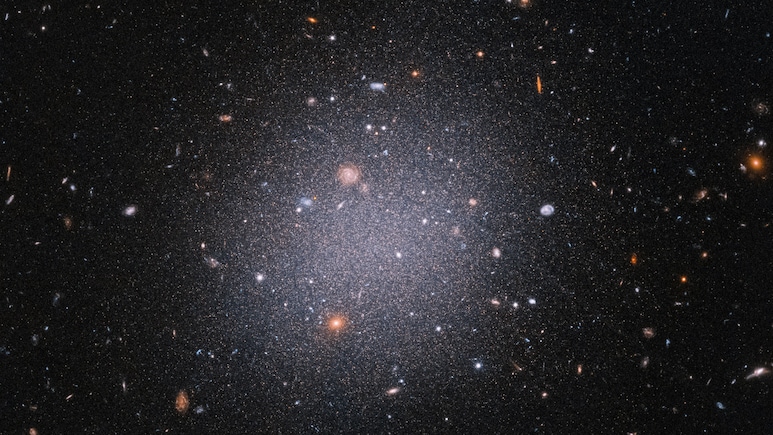
- Dark matter is an invisible substance believed to hold the universe together
- A mysterious gamma-ray glow near the Milky Way's centre was detected in 2008
- The glow may result from dark matter collisions or numerous millisecond pulsars
Dark matter is something that we can't see. According to NASA, it is an "invisible glue" that holds the universe together. Some scientists are convinced that this mysterious material exists, making up most of the matter in the universe. But no one knows what exactly it is.
Meanwhile, scientists are curious about a mysterious glow of gamma rays near the centre of the Milky Way, and they think it could be evidence of dark matter.
The glow, which was detected by NASA's Fermi Gamma-ray Space Telescope shortly after it was launched in 2008, continues to puzzle scientists even today.
Also Read | Scientists Find Most Powerful, Distant Odd Radio Circle Ever Detected
There are two main theories about this glow. One suggests that dark matter particles might be colliding and destroying each other, producing gamma rays as a byproduct.
Another theory suggests that the glow could be caused by thousands of unobserved millisecond pulsars, which are neutron stars that emit gamma rays as they spin rapidly.
Both theories have been supported by scientists. But as per CNN, the gamma ray glow was in the shape of the galactic bulge, which is a crowded and bulbous region at the centre of the Milky Way, mostly made up of old stars.
Now, a new paper that has been published in the journal Physical Review Letters reveals new findings about the glow and dark matter.
Also Read | Is There A Limit to Human Metabolism? What New Research Suggests
Based on simulations which are made using supercomputers, for the first time shows that dark matter collisions could also have created the bulge-shaped glow.
"Dark matter dominates the universe and holds galaxies together. It's extremely consequential and we're desperately thinking all the time of ideas as to how we could detect it," said co-author Joseph Silk, a professor of physics and astronomy at Johns Hopkins and a researcher at the Institut d'Astrophysique de Paris and Sorbonne University.
"Gamma rays, and specifically the excess light we're observing at the center of our galaxy, could be our first clue."
The study notes that if excess gamma light is not from dying stars, it could become the first proof that dark matter exists.
The Fermi Gamma-ray Space Telescope has mapped this excess gamma-ray emission, and scientists are confident that dark matter exists due to its gravitational effects on visible matter. However, detecting it directly has proven challenging.
The key findings of the dark matter fit the gamma-ray data as well as the millisecond pulsar hypothesis.
Scientists say that the Cherenkov Telescope Array Observatory might provide an answer by differentiating the gamma-ray emissions from these two sources.
The telescope is under construction at two sites - one in Chile and another in Spain - and will start to return data as soon as 2027.
Track Latest News Live on NDTV.com and get news updates from India and around the world

